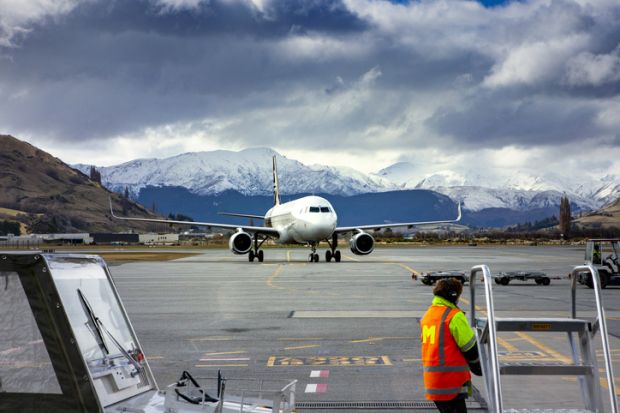Up to 5,000 international students will be admitted into New Zealand in time for the second semester, under a border-reopening plan announced on 3 February. But tens of thousands more will have to wait until October, effectively ruling out campus-based studies before 2023.
Under the five-stage plan, the borders will inch open on 27 February when New Zealanders who have been vaccinated against Covid-19 are allowed home from nearby Australia. Citizens and residents will be admitted from other parts of the world two weeks later.
Highly paid skilled workers and travellers on working holiday schemes will be prioritised, with the borders opened to them on 13 March. The first tranche of international students will be admitted at stage three of the plan, from 12 April, but other students will have to wait until October when normal visa processing is scheduled to resume.
Wellington flagged its aspiration to reopen borders last August, with vaccinated travellers to be granted entry from early 2022. In November the government firmed up its plans, with NZ citizens to be allowed in from mid-January and foreign students from late April.
But the Omicron variant forced a rethink in late December, with citizens’ return delayed by six weeks and the entry of foreign students put on hold.
The government’s promotional agency for international education, Education New Zealand, said the announcement presented an “opportunity to rebuild and reshape” the sector. “[It] means international students can plan towards being in NZ for courses starting in 2023,” said chief executive Grant McPherson.
He said the 5,000-strong student cohort earmarked for early entry was much larger than three previous groups allowed in under “border exceptions” approved by the government during 2020 and 2021. The three earlier exceptions collectively allowed 2,250 students into the country. But take-up proved muted, with students apparently deterred by flight and quarantine costs.
The new reopening plan does not require fully vaccinated travellers to undergo formal quarantine, although they must self-isolate for up to 10 days.
Universities New Zealand chief executive Chris Whelan said the announcement would give his eight members “much needed certainty”.
“At least some international university students will be able to make it onshore for the start of semester two, although only a small proportion of the number we know are clamouring to get here,” he told news website Stuff.
“Australia, the US, UK and Canada are now all fully reopened to international students, but NZ won’t be until October…leaving us a year or more behind those competitor countries.”
Australian immigration minister Alex Hawke said around 7,000 international students had reached his country in the last week of January, bringing the tally of student arrivals since late 2021 to 56,000. Mr Hawke said his department had received more than 50,000 applications for student visas over that period and extra staff had been assigned to process them.
Private college representative group Independent Tertiary Education Council Australia said overseas enrolments were growing “much faster than we initially thought possible”. Chief executive Troy Williams said the “strong renewed interest” augured well for student flows.
“It’s concerning that international education providers in Western Australia aren’t experiencing this recovery due to their state government’s isolationist stance,” he said.
Register to continue
Why register?
- Registration is free and only takes a moment
- Once registered, you can read 3 articles a month
- Sign up for our newsletter
Subscribe
Or subscribe for unlimited access to:
- Unlimited access to news, views, insights & reviews
- Digital editions
- Digital access to THE’s university and college rankings analysis
Already registered or a current subscriber? Login








